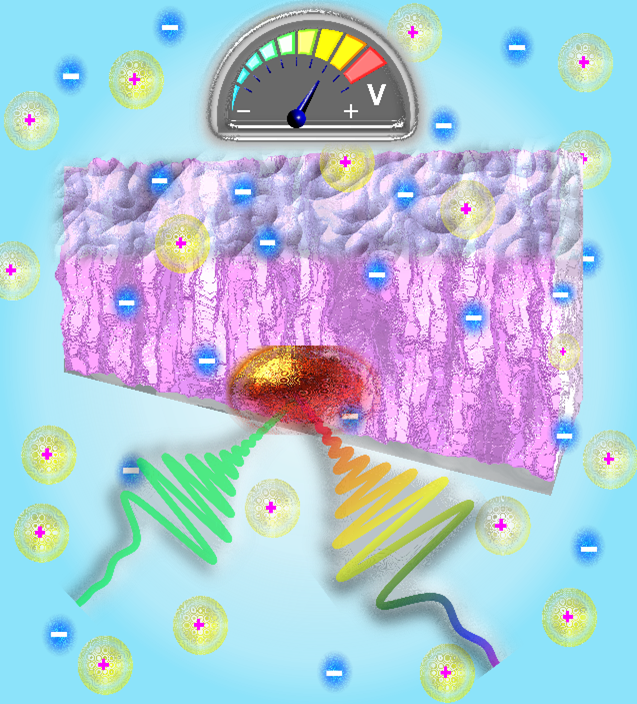An ever-increasing number of technologically relevant applications rely on the ability of new materials, especially polymers, to transport not only electrons but also ions. For example, next-generation batteries, electrochromic displays, bioelectronic interfaces, and sensors all share a common underlying working paradigm: the co-existence of electronic currents, which are more familiar and better understood, with ionic currents, which are more complex and depend on a number of unique and complex factors.
In this complex scenario, the introduction and interaction of electronic and ionic charges in the polymer active layer determines the performance of the final device. However, the underlying mechanism of this fundamental process of charge formation is still elusive and remains difficult to study. A team of researchers from Georgia Tech addressed the issue by studying the behavior of a state-of-the-art dioxythiophene-based polymer using a combination of vibrational and ultrafast spectroscopies. The vibrational technique gathers information of how the macromolecules vibrate as signatures of the polymer conformation during the process of charge injection. Meanwhile, the ultrafast spectroscopy technique employs very short-lived beams of light, each with a unique energy, that are pulsed at very specific time intervals to shed light on the interaction and formation of charges in the polymer. Importantly, the authors were able to perform these studies in the archetype of this class of devices: an electrochemical cell. By performing these studies in the cell, the researchers were able to precisely control the charge density in the polymer while also mimicking the environment the polymer feels in the targeted application. Through these studies, the scientists sought to understand what happens to the polymer at a molecular level as a small potential (or voltage) is applied to the polymer, triggering a redox process and initiating the flow of electronic and ionic current through the cell.
The exciting results of this research have been published in a recent issue of the Journal of the American Chemical Society (JACS). The complex nature of the problem sparked the collaboration between two groups at Georgia Tech, led by Carlos Silva (professor in the School of Chemistry and Biochemistry and the School of Physics) and John Reynolds (professor in the School of Chemistry and Biochemistry and the School of Materials Science and Engineering).
The fruit of this work was enabled by synergy between the two groups, which created a rich and stimulating environment for science. While both groups were coming from different disciplines, the combination of their unique insights led to a break-through in the research: a link between the manner of charge injection and the molecular arrangement of the polymer itself could be established.
“We now understand the elementary steps of charge injection as a voltage is applied,” said leading co-authors Ilaria Bargigia and Lisa Savagian. “At every step of the process, we are able to study what is happening to the polymer – how its conformation evolves, how the electronic charges interact, and how this changes as we start to introduce ions into the film. It is insight that has never been obtained in this manner before.”
These findings are not only important per se, but their value lies also in the fact that they will prompt further research and can be used to engineer the chemical composition of these materials to advance the field of electro-active devices.
While the research is of fundamental importance, as it provides insight into the behavior of a state-of-the-art material, it also has practical consequences for the field at large. “Our study demonstrates a new toolset for studying critical processes in redox-active polymers. We hope that others in the field can apply these techniques to a broader range of materials and develop a comprehensive picture of charge injection in polymers,” Bargigia and Savagian report. The team believes that these results will allow their team to develop new materials employed in active devices important for healthcare, security, and communication.
Read the research paper: Charge-Transfer Intermediates in the Electrochemical Doping Mechanism of Conjugated Polymers
For More Information Contact
Jessica Hunt-Ralston
Communications Director
College of Sciences
404-385-5207






